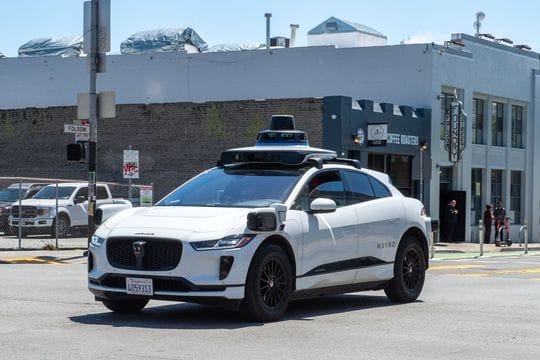- Ai researches
- Posts
- 🧑💻 OpenAI Internal Data Hacked
🧑💻 OpenAI Internal Data Hacked
plus, The Billion-Dollar AI Boom!

Welcome, AI RESEARCHERS.
In a shocking turn of events, a hacker has managed to breach OpenAI’s systems, peeking into personal conversations and details about ongoing AI projects.
This incident underscores the vulnerabilities even leading tech firms face, highlighting the crucial need for robust cybersecurity measures. Let’s dive deeper.
In today’s AI Researchs:
OpenAI's Security Breach
AI Training Costs Are Skyrocketing!
Robotic Heart Surgery Breakthrough
Driverless Car on the Wrong Side of the Road!
AI Reads Minds
How to Mastering Krea AI's New Scene Transfer Feature
AI Researchs & AI pointers
Trending Ai tools
More Ai quick hits
Read time: 6 minutes

OPENAI HACK

Image source: Getty images
AI Researchs: Early last year, a hacker breached OpenAI's internal messaging systems, raising significant concerns about the security of their AI technologies and potential china threats.
In early 2023, a hacker accessed OpenAI's internal forums, stealing details about their AI technologies.
OpenAI executives informed employees and the board but kept the breach private, believing the hacker was an individual without ties to foreign governments.
Some employees feared foreign adversaries, like China, could steal AI technology, potentially posing a national security threat.
OpenAI has created a Safety and Security Committee and is enhancing security to prevent future breaches.
Other AI companies like Meta share their designs openly, while some, like Anthropic, argue that current AI technologies aren't a significant national security risk.
Why this is important: This hack shows how even top AI firms like OpenAI are vulnerable to security breaches, raising concerns about protecting sensitive information from foreign adversaries like China.
AI TRAINING

AI Researchs: AI models are getting more advanced, but the cost to train them is shooting up. What used to cost $100 million is heading towards $1 billion or more. Let’s dive into why this is happening.
Training top AI models like ChatGPT-4 currently costs about $100 million.
Dario Amodei, CEO of Anthropic, predicts that in just a few years, training costs could reach $10 billion or even $100 billion.
The increase in costs is mainly due to the need for more powerful hardware. For instance, new AI chips from Nvidia are very expensive.
These powerful AI models need a lot of energy. Last year, the power used by data center GPUs could have powered 1.3 million homes.
To handle this huge power demand, tech companies are exploring solutions like modular nuclear power for their data centers.
Why this is important: AI is getting more advanced, which means it can do more complex tasks, but the costs to train these models are rising fast, which could limit who can afford to develop new AI technologies.
ROBOTICS

Image source: Getty images
AI Researchs: Saudi Arabia's King Faisal Specialist Hospital has made a big splash in the medical world. They've successfully performed 400 robotic heart surgeries with a 98% survival rate since 2019. This impressive feat puts them at the forefront of robotic cardiac care globally.
Since its start in February 2019, KFSH&RC’s Robotic Cardiac Surgery Program has reached 400 surgeries with a 98% survival rate.
Robotic surgeries have reduced blood transfusions, shortened mechanical ventilation times, and led to faster patient recovery.
Hospital stays are cut by over 50%, resulting in a 40% decrease in overall costs compared to traditional methods.
The program includes complex surgeries like multi-valve operations and aortic valve replacements. It's the only hospital globally to perform robotic cardiac surgeries on children.
Successful surgeries have been performed on high-risk patients, including children under 18 and those with morbid obesity..
Why this is important: The success of KFSH&RC’s robotic heart surgeries shows that advanced medical technology can improve patient outcomes, reduce hospital stays, and lower costs.
ROBOTAXI

Image source: Getty images
AI Researchs: Imagine driving down a busy street and seeing a car coming right at you in your lane – but there's no driver! That's exactly what happened in Phoenix, Arizona, when a police officer pulled over a Waymo self-driving car going the wrong way.
A Waymo driverless taxi drove into oncoming traffic in Phoenix. The police pulled it over, only to find no human driver inside.
The officer talked to Waymo's support team through a robotic voice, explaining the situation. The car had issues with confusing construction signs and ended up in the wrong lane.
This isn't the first time self-driving cars have had trouble. There have been 31 other incidents with Waymo cars, mostly in Arizona.
No one was hurt, and the car was only in the wrong lane for about 30 seconds. The police couldn’t issue a ticket to the car since it’s controlled by a computer.
Why this is important: Driverless cars are supposed to make our roads safer, but incidents like this show there's still a lot to figure out.
AI RESEARCH

AI Researchs: Imagine an AI that can show what you're looking at by reading your brain waves. Researchers have developed a system that can do just that, with impressive accuracy.
For more details:
A new AI system can recreate images from your brain activity. Researchers have found a way to translate brain waves into visual reconstructions of what someone is looking at.
The AI doesn't read your mind in real-time. Instead, it analyzes recorded brain activity using functional MRI (fMRI).
By understanding which brain regions are involved, the AI can generate images that closely match what you were seeing.
In tests, researchers showed photos to participants and recorded their brain activity. The AI then recreated these images with impressive accuracy.
Interestingly, the AI performed better with AI-generated images, likely due to shared underlying algorithms.
Why this is important: This technology could have exciting applications in fields like neuroscience, psychology, and even communication for people who are unable to speak. It opens up new possibilities for understanding how the brain processes visual information.
AI tutorial

AI Researchs: The AI Edit tool from Captions.ai allows users to automatically edit videos with custom graphics, zooms, music, sound effects, transitions, and motion backgrounds, powered by state-of-the-art language models.
step-by-step;
Choose from one of the available video editing styles (Impact, Cinematic, Paper) or wait for more options.
Upload your unfinished video footage and let the AI analyze it.
The AI will automatically insert the appropriate editing elements based on your selected style.
Review the edited video and make any desired adjustments.
Download your fully edited video.
AI tutorial

AI Researchs: Krea AI's new Scene Transfer feature allows users to relight images and change scenery across various categories, including interiors, vehicles, product design, humans, and animals. This tutorial guides you through accessing, configuring settings, and achieving optimal results with this feature.
step-by-step;
Access Scene Transfer: Click on the "Enhancer" tab and drag-and-drop your image to upload.
Enable Settings: On the right-hand side, activate both "Upscaling" and "Scene Transfer."
Adjust Prompts: In "Upscaling," type a descriptive prompt of the main subject matter and adjust the strength slider to around 0.10 for best results.
Configure Scene Transfer: Copy the prompt from "Upscaling" and use it in the Scene Transfer settings, adjusting the strength slider to 0.70.
Enhance Image: Click "Enhance" to apply the settings and view the final result.
AI Research Roundup
Google’s latest environmental report reveals a 48% rise in greenhouse gas emissions since 2019, attributing this to the substantial energy use in AI data centers and supply chain operations, with a notable 13% increase just in the past year.
Bloomberg Intelligence expects, generative AI revenue to exceed $1.3 trillion in 2032, up from $63.5 billion in 2023. Put differently, Bloomberg believes spending across generative AI hardware, software, and services will surge 2,040% over the next nine years.
A University of Copenhagen study involving 60,751 women before and 58,246 women after AI implementation in breast cancer screening showed a notable increase in cancer detection rates, a decrease in false positives, a reduction in recall rates, and a 33% drop in radiologists' workload.
AI Pointers
Endeavor CEO Avi Emanuel says Sam Altman is a conman and that Elon Musk gave him a lot of money to create a non-profit only for OpenAI to be turned into a for-profit company and we should not trust them to take sufficient caution with creating powerful AI
Tom Bilyeu says there will be a split in the human race over the next 15-20 years between people who augment themselves with AI and Neuralink, and Puritans who reject technology
OpenAI Co-founder Andrej Karpathy explains the new computing paradigm: "We're entering a new computing paradigm with large language models acting like CPUs, using tokens instead of bytes, and having a context window instead of RAM. This is the Large Language Model OS (LMOS)"
Bhavish Aggarwal, the head of Ola, says AI could boost job opportunities in India by tenfold, particularly affecting white-collar jobs in the next five years, but leaving most blue-collar jobs as they are.

📽️ Dream Machine - Transform words into captivating videos effortlessly, no filmmaking experience required.
👕 AI T-Shirt Generator - Craft unique t-shirt designs with a simple prompt and print them when satisfied.
🎼 AI Music Generator - Compose catchy tunes that sound professionally made, effortlessly.
🖼️ Image Generator by Leap - Generate stunning images from text prompts to make your projects stand out.
📖 Amnesia - Experience history through immersive, choose-your-own-adventure stories.
🔊 EelevenLabs Voice Isolator - Use AI to isolate voices and eliminate background noise.

At the World AI Conference, SenseTime unveiled its improved SenseNova 5.5 model with a 30% performance boost, while Alibaba shared user growth stats for its Tongyi Qianwen models, showcasing the heated AI race in China.

Share Your Opinion
Reply